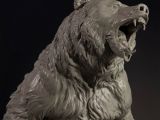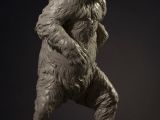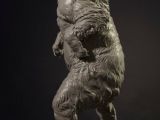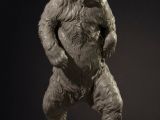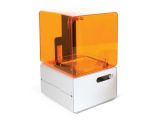Fused deposition modeling, or FDM for short, may be limited in terms of detail quality, due to the nature of filament layering, but stereolithography, or SLA, can be used to produce much more precise objects.
Mattia Mercante, a man from Italy, chose to see for himself just how detailed he could make an object using the Form1+ 3D printer. He chose a bear, fur and all.
The result can easily be seen in the attached gallery, and it is a very impressive result indeed. You can see the individual strands and tufts of hair.
The only thing missing is a more realistic paint job and you could swear you are looking at the real thing, or a stuffed bear provided you ignore the scale.
The 3D printed pair is pretty small, at 330 mm / 13 inches in height, but when you look at a close-up photo, it's easy to assume it's not a miniature.
The 3D printed realistic bear
Mercante used a model created by designer Boi Piroth. SLA is great and all, but the object quality depends on the model itself greatly.
The file needed to be optimized for printing though, so the man used the Zbrush file (.ZTL extension) to merge all sub-tools into a single mesh. Then he used re-topology and re-meshing tools to convert all the surfaces into closed volume surfaces.
After that came the podium, which he designed in such a way that it could be separated from the main figure.
That only left one last problem: the Form1+ 3D printer doesn't have a particularly large build volume. Because of that build area (125 x 125 x 165 mm / 4.92 x 4.92 x 6.49 inches), Mercante had to divide the 3D model into seven parts: the head, the chest, the lower body, two arms, and two legs.
He used a 2mm wall thickness to ensure the vacuum and adhesion effects were avoided, otherwise the printed objects would have been warped, since they are holed. Large borders were added along the edges as well, to make it easy to glue the pieces together.
The resolution is of 100 microns and the print took 56.5 hours to finish: 7.5 for the head, 6.5 hours for the chest, 10 hours for the body, 7.5 hours for both arms, and 11 hours for both legs.
The base is the only part that wasn't made with the Form1+. Being so much larger than the other parts, it was made on a MakerBot Replicator instead.
Post-processing
The bear only came out right on the third print and weighs 500 grams / 1.1 kilos. Once the pieces were done, Mercante bathed them in isopropyl alcohol twice, to remove any leftover liquid resin. Then he took some sandpaper, small rasps and a Dremel micro motor to remove the supports.
Finally, resin like the one used for the print job itself was used to glue the components together and the whole bear was painted light grey, with the “ground” colored a darker shade.
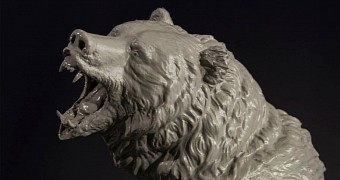
 14 DAY TRIAL //
14 DAY TRIAL // 
